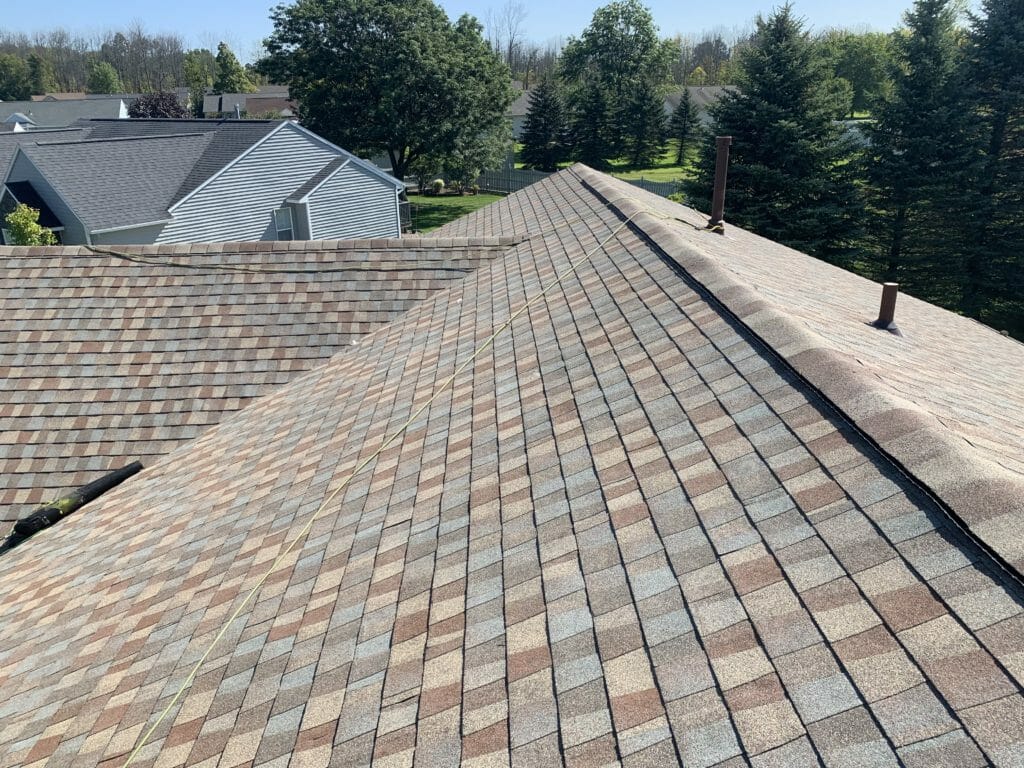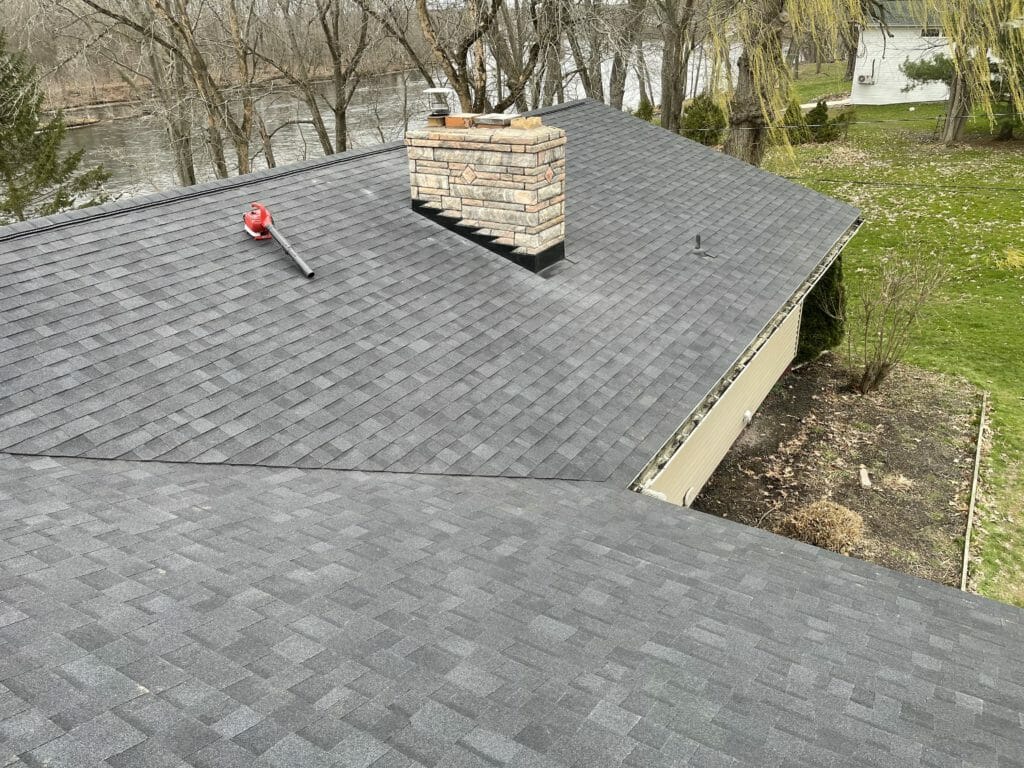Are you feeling lost trying to figure out the best roof for your home? It can be overwhelming with all the options available today. Homeowners often feel stuck. They might worry about making a wrong, costly choice. Finding the right fit for your needs doesn’t have to be difficult.
Let’s look at popular residential roofing materials and what makes them different. This information will guide you through the process so that you are equipped with a solid knowledge foundation before reaching out to an expert roofer. This way, when you decide to install new roofing, you know which of the residential roofing materials you want to use.
What to Consider Before Choosing Roofing Materials
Before jumping into material types, take a moment to think about your specific situation. Several factors impact your roofing needs and should be taken into account before any materials are purchased. Taking the time to properly research your options and understand key considerations is a critical step. Doing so helps you choose the roofing options that is best suited for your individual needs and circumstances.
Budget
Cost is a big piece of any home project. Roofing is no different. Set a budget before you start seriously shopping for roofing materials. Doing so narrows down the field to the choices that make financial sense.
Asphalt shingles tend to be a budget-friendly option. More durable materials like slate or metal usually mean higher initial expenses. Don’t only focus on the up-front costs. Think about the long game.
Some roofing materials could save you in energy costs or last longer. This lessens the need for repairs or replacements. This can offset the higher initial cost of materials, and provide cost savings in the long run. Choosing the most economical options does not always translate into the best overall value.
Local Weather
Your local climate conditions matter when choosing roofing. If you live in an area with heavy snowfall, make sure your roof can handle the weight. Also, consider impact-resistant roofing in regions prone to hailstorms.
Consider the durability needed, too. Metal roofs excel in areas with wildfires because they are fireproof. Extreme weather conditions can drastically affect the lifespan of certain roofing materials. This makes understanding your local environment and its effects on roofing an essential aspect of the decision making process.
Home Style
Pick roofing materials that match your home’s architectural style. Tile roofs often pair well with Mediterranean or Spanish-style houses. Wooden shingles or shakes, on the other hand, could boost the look of a rustic or traditional home.
Also consider potential resale value when selecting roofing for a unique looking house. Your choice of roofing can impact the overall curb appeal of your home, which affects its market value. So make sure to choose roofing options that not only look great but also complement your home’s architectural style.
Durability and Longevity
How long do you plan on staying in your home? This can influence what to look for when deciding on roofing. If you want something long-lasting, slate, tile or metal roofs could be good options.
These can potentially last for 50 years or more. Asphalt shingles are more economical but may only last for 15 to 30 years. Make sure to protect your investments too by ensuring residential roofing is kept in good condition over its lifespan.
Different materials provide varying degrees of durability and longevity, which can significantly affect your long-term costs and satisfaction. If you are looking for long-lasting roofing material, consider investing in premium options like metal, slate or tile.
Popular Residential Roofing Materials
Okay, now we have to think about your situations to go over our roofing material choices. Let’s dive into common residential roofing picks.
Asphalt Shingles
Asphalt shingles make up most roofs in America. They strike a good balance of cost and ease of setup. Also, you can find them in lots of styles and colors.
They often last between 15 and 30 years, and many homes already have them. Consider architectural shingles for a more dimensional look that can add to your curb appeal.
Pros
- Cost-effective option.
- Easy to install.
- Variety of styles and colors.
Cons
- Not as eco-friendly as other choices.
- Shorter lifespan than some materials.
Metal Roofing
Metal roofs are known for lasting a long time and being able to handle tough conditions. They resist fire, high winds, and even big snowfalls. Metal roofing can potentially decrease cooling costs by reflecting heat, offering more energy savings.
A standing seam metal roof is a popular choice that offers clean lines and a modern aesthetic. Many homeowners appreciate the long-term value and benefits of metal roofs.
Pros
- Very durable and long-lasting.
- Fire-resistant.
- Energy-efficient.
Cons
- More expensive up front.
- Noisy when it rains or hails.
Factors Affecting Roofing Material Costs
Location greatly affects material costs. Transporting materials impacts costs. This makes some roofing types more expensive in some areas versus others. Always get local quotes before making tough choices.
Material availability can also vary depending on your geographic location, with some roof material being more readily accessible and cost-effective in certain regions. It’s recommended to consult with local suppliers and roofing professionals to obtain the most accurate and relevant cost information for your specific project needs. Consider the long-term benefits when making decisions about the type of roofing materials to use.
Do It Yourself or Hire a Pro?
Small roofing jobs are manageable if you’re skilled. However, safety is vital. It is important to take precautions when doing any kind of construction work.
Big projects usually need pros, because getting it wrong could be very expensive. Experts will install your roof while sticking to local construction rules. Working with a licensed roofing contractor is essential to the success of the project.
Roof Maintenance and Care
To help your roof reach its max life, think about a consistent maintenance program. Keep an eye out for damage, clear away leaves and rubbish, and fix minor problems quickly. Consistent and adequate maintenance leads to savings down the road by discovering troubles fast.
The lifespan of different roofing materials should all be a key part of any care plans too. You should find out the roof’s warranty as well, as this will help keep you aware of any damages to look for. Different roofing manufacturers have different warranty options available for the consumer to explore.
Making Informed Roofing Choices: Key Takeaways for Homeowners
Picking roofing means weighing your wants against factors like budget and local weather. Thinking about these considerations results in the proper roof selection for many years. Proper research and care into finding residential roofing results in finding the popular choice.
No matter which type of structure it might be, choosing the right residential roofing materials involves examining price points, material durability, weather conditions, architectural aesthetic and potential resale values. With research and speaking with professional roofers you’ll obtain suitable solutions for roofs.





